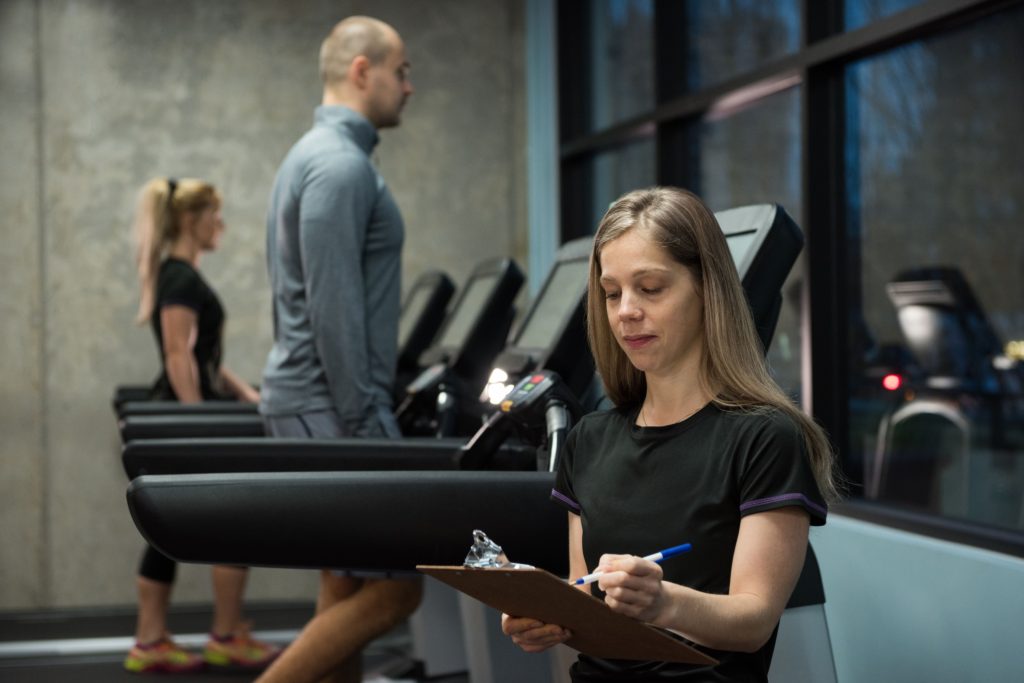Athletic training is a sports and rehab profession that works with athletes and patients to prevent, treat, and rehabilitate injuries. Athletic trainers play a critical role in helping athletes perform at peak levels. In addition, athletic training is expanding into new practice areas such as hospitals, physician offices, and physical therapy clinics.

How do I become an athletic trainer?
To become an athletic trainer requires a master’s degree from an accredited college or university and takes 2 years to complete. (This transition from a bachelor’s to a master’s degree occurred in the last few years.) To be accepted to an athletic training program, a bachelor’s degree of your choice is often acceptable. Typically, a degree in biology, physical education, sports science, nutrition, or exercise science prepares you well for an athletic training program. Programs require both classroom coursework and hands-on clinicals. Courses include biology, physiology, nutrition, kinesiology, and evaluation and treatment of sports injuries. Hands-on experience includes working with high school and college athletes in the sports environment. Clinical experience might also include working with physical therapists and physicians in an outpatient office.
While nearly all states require athletic trainers to be licensed or certified, the requirements vary by state. Most states require athletic trainers to attend a school accredited by the Commission on Accreditation of Athletic Training and pass a national exam offered by the Board of Certification for the Athletic Trainer (BOC).
What does an athletic trainer do?
While many athletic trainers work with high school or college athletes, athletic trainers work with all skill levels and ages. They are typically the “first responders” on the field when injuries occur. Athletic trainers may provide care under the direction of a licensed doctor or meet regularly with a team and consulting physician.
Athletic trainers identify and evaluate injuries, give emergency care, apply injury-prevention devices (tape, braces, etc.), and provide rehabilitation programs for injured athletes. Injury prevention programs are also a vital responsibility of athletic trainers. They may also have administrative duties, such as meeting with the athletic director and ensuring compliance with state and federal regulations.
Athletic trainers are now utilized in hospitals and clinics. For example, an athletic trainer may work with an orthopedic surgeon to assist an athlete or patient recovering from surgery. In addition, they might consult with other health care professionals such as physical therapists, dietitians, and physician assistants on wellness and health following an injury or illness.
Athletic trainers provide compassionate, quality care for athletes and patients while being detail-oriented to track an athlete’s progress. Good decision-making skills are necessary for the well-being and livelihood of their athletes and patients. Last, athletic trainers must have good interpersonal skills to communicate effectively with athletes, parents, physicians, and coaches.
What is an athletic trainer’s salary?
The average annual salary for an athletic trainer is $48,440 in the United States. Working in an educational setting, like a school or college pays about $4,000 more annually. Other top industries are hospitals and fitness or rec centers. The top-paying states for athletic trainers include Hawaii, Connecticut, California, New Mexico, Texas, Colorado, Georgia, Virginia, New York, and New Jersey, Massachusetts, and Rhode Island. Athletic trainers in these states make over $60,000 a year.
What is the job outlook for athletic trainers?
Athletic training is a booming field, with growth projected at 16% over the next 10 years. With more middle-aged adults staying active, along with a better understanding of sports-related injuries, demand is expected to increase. Additionally, concerns with youth concussions and sports injuries ensure the demand for athletic trainers in high schools will continue to grow.